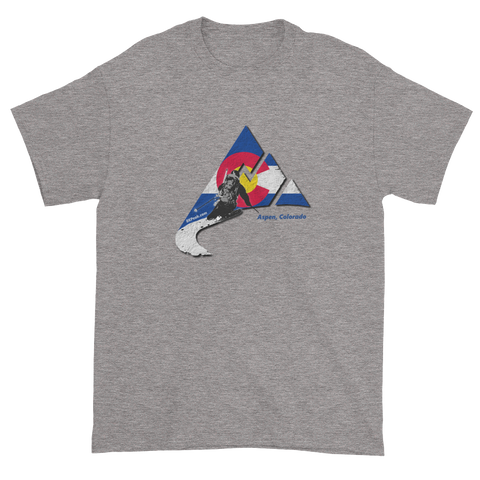
Ahh, the joy of training for a big expedition is always an interesting topic. Over the year I have followed a couple blogs on people heading to the Himalaya and it seems that the topic is one that generates as many opinions as it does methods. Having been on a few Himalayan expeditions myself over the past 25 years, it always gets me a little excited. But that experience also tends to make me look at my own experience with a critical eye, and so I thought I would write about it.
I think the underlying value of training for a Himalayan giant can’t be emphasized enough. Climbing in the Himalaya is a unique experience making it something that you really can’t simulate or look for outside of actually doing it, so don’t try. Altitude is the real culprit and while training in miserable conditions can get you used to being cold and miserable, if you are not used to that by the time you decided to take on the Himalaya, chances are you would be better off getting used to the elements on lesser peaks where your window to get out and climb is not so limited due to altitude. The combination of high altitude and nasty weather is just not something any human, no matter how well they are trained, should ever attempt to “beat”. Training for it breeds a fair amount of pre-trip bravado as the blogs can attest to, but outside of a life of hardening yourself, training as such for a few months is only going to make you tired, possibly sick, and leave you wishing you were home the entire expedition because the previous months of punishing effort made you hate the sport in general. Keep in mind, after a few months of pushing yourself in the rain and snow, carrying ungodly weight in your pack will pale in comparison to what awaits you at altitude, so it’s important to train in a manner that makes you love climbing as much as possible before you get on the airplane. The Himalaya pushes anyone to their mental limit, so go in hungry for more, not tough to withstand what awaits you.

So now I know, the buzz in your mind is this guy is lazy. That is not my intent here. I didn’t say don’t train. You need to train for the race of your life. You just don’t have to walk over the equivalent of hot coals to get into shape. Here is what I have found as a reasonable plan to simply get into the best possible shape you can get into for the high Himalaya. This starts by realizing your toughness is what you have today. You can’t train immediately to increase that; it takes years. But everyone can train their bodies into better shape relatively quickly.
For a major expedition, training and the bravado is fun, no question. An expedition gives you an incentive to whip yourself into shape so take advantage of it. So to start, you really have to be honest about your level of fitness. This will determine the level and duration of your training. It has to be assumed that if you are planning a Himalayan expedition, you are one of those guys that likes to be in shape, you climb when you can, so your attention to the training is going to entail some modifications of diet and intensity. This is critical because you have to allow yourself enough time to get into the best shape of your life for any Himalayan project given a set amount of time and your starting point. Being in great shape doesn’t guarantee you will do well at altitude, but what it does is gives you a platform to acclimate with less stress on your body while you go through the process. Acclimation is basically the same for everyone with a bell curve that peaks at the same spot regardless. Whether you are a world class endurance athlete or even mountaineer, or new to the game, it’s a fact that the human body can only go so high. How you get to the top of this curve is critical. If you are not in shape, you can still acclimate, but you will be a lot more haggard when you get there if you have not prepared. Using the marathon as an example, it’s easier for someone well trained to run 26.5 miles than for someone to do it off the couch. So be honest. If you are not sure what kind of shape you are, pay for a professional evaluation. Most training facilities have the ability to test this or point you in the right direction.
After you find your general fitness level, the key is to figure out the time span you will need to set your program in place. Regardless of the time, you will then want to break your training down to 3 stages. I generally plan on 6 months and break it down to 3 equal sections: power, power endurance, and endurance.
Power is critical. This means beefing up in the gym 3 or 4 days per week. I have found that 20 minute super intense intervals on a cardio machine to increase anaerobic capacity followed by intense resistance and weight training is key. One day a week I will go for an hour endurance speed hike or bike ride but no more. Muscle mass is important and it will provide you with a base, and endurance training depletes muscle mass. Most people consider mountaineering an endurance sport which it is, but up high, as Messner put it, it’s about having power to function. Carrying a heavy pack entails power. But also, getting your pack on and off throughout the day entails power. For me, add skiing and power is even more critical. You also need endurance, but concentrate first on getting big and strong. The endurance training that comes later will get you down to fighting weight, but you need to start with the base of pure power.

Power and endurance is the next stage. I decrease my gym time a bit and replace those efforts with more endurance. So I am now still doing high intensity endurance workouts with resistance training, but instead of hitting the trail for a speed hike one day, I will add a day or two more. Still, I keep the endurance down to no more than one hour. It’s an intense hour, but no more. This is the most intense stage for all the workouts so I am very careful to get plenty of rest. I will work out two days and then off. Intensity training is a great thing, but if you don’t pay attention to your body, you can fatigue it into sickness and chronic colds. So go hard, but get a ton of rest.

The final stage is the fun stage. It includes a lot of longer climbing and ski days. I try to get to 13 or 14,000 feet at least once per week in a long 2 to 5 hour effort and spike in a couple slightly lesser efforts. If you don’t have the luxury of mountains nearby, any anaerobic exercise is great. Many people suggest carrying a heavy pack during this stage but I have found that this only serves to break me down. I am not a big fan of ever carrying more than I need for a particular adventure if only because it’s just not fun carrying a load. Light is right. The argument for carrying a load is to get your body used to it. There is merit in this, but on a Himalayan climb, you will be doing a lot of load carrying on the mountain in the acclimation process of carrying high and sleeping low, and you might be a bit sore at the beginning, but that will soon fade as you get into the routine if you are in great shape when you get to the peak. This phase is also when you get your weight to optimal levels. Some climbers believe going in a bit heavy to make up for the weight you lose in the course of a climb is important, but in my experience the power phase gives you the right kind of weight. Pigging out to add weight will leave you in less than optimum shape and it serves to stress your body at altitude. Go in light and powerful, in optimal condition, and bring great food with you to keep the calorie ratio up. Diet on an expedition is another topic I will post later. For now, train for the race of your life.
When you get to the mountain, you simply need to be in great shape. Concentrate on power first and blend it with endurance through the period before the expedition so that when you get to the mountain you have power and endurance, but more importantly are feeling fresh and hungry to give the peak 100% effort. And remember, the worst feeling in the world is standing at the base of a peak unprepared. It limits your chances of reaching your potential, and best case, if you get the peak, you will more than likely be so miserable in the process, you will probably leave with a been- there-done- that feeling that will leave you looking for your golf clubs for future adventures. If you go in 100% prepared, what happens on the peak is out of your control. The peak will either let you climb or it won’t, but being totally prepared will eliminate doubt and the terrible feeling of “if only I ……”


